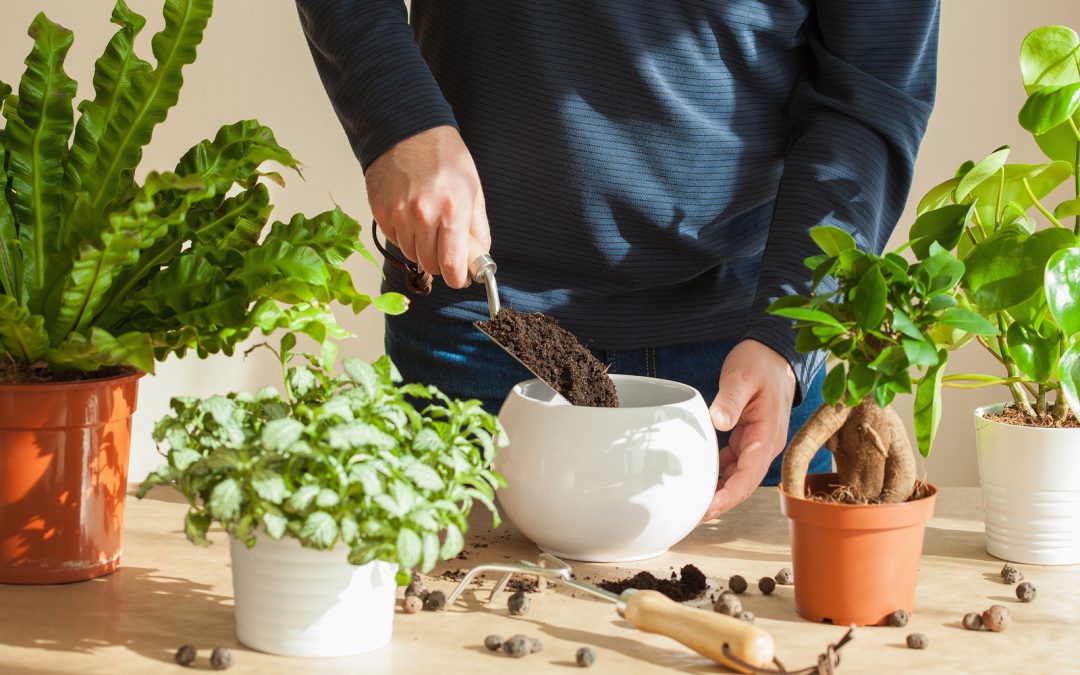Container plantings have many charms. Firstly, the containers themselves can add drama and interest to your garden. Also, multiple containers means you can have multiple soil types and drainage conditions. And your container plants can be relocated as needed, whether for redecorating or a seasonal change, like bringing them indoors for the winter.
If you’re not working with a landscape designer, there are some tips you can use to optimize your results. The top rule you need to follow is to give the plants what they need to thrive. Be mindful of drainage, sunlight, and temperatures. After that, your choices are all a matter of style.
Taking into account your plants needs, you should give attention to these areas:
Contents
Sizing
The size of the pot and the size of the plant should be compatible with each other. Keep in mind the root depth or width the plant needs, and give it room to grow in place until you intend to repot. If you don’t have a green thumb, you may want to mark your calendar for when you should check if plants need repotting. It’s easy to forget.
Aesthetically, you’ll probably like the results best if the width of the above-soil plant isn’t more than 1 and a half times the width of the pot. Of course there are exceptions, although they are few.
Color
Potted plants give you so much opportunity to play with color! You can stay in one color family with different shades for tranquility, or choose contrasting colors for an impact. Keep in mind that trailing plants will cover much of the pots that they’re in, and a high contrast colored pot can highlight the shape of cascades of greenery. Also, keep in mind that all green plants are not the same color green. You can mix and match greenery too.
Texture
Pots can have slick shiny textures, or detailed ornate clay carvings that look dry and matte. Plants can have feathery fern fronds or thick glossy rubber tree leaves.There so, so much you can do with texture. You can make the area feel soft and fluffy with delicate airy plants or firm and structured with palm trees or cactuses. Consider texture of both plants and containers, and whether you want them to contrast or be similar.
Manage Your Focal Point
Within your grouping of plants, there will likely be one planting that stands out- but there doesn’t have to be. If you want to keep attention on a water feature instead, for instance, keep your containers and their plants matching and repetitive to let the eye pull to the intended focal point.
If you choose to have a focal planter, having it be the largest/widest/tallest is an easy way to accomplish this. Or you can have a smaller but stunning planter surrounded by empty space or much less interesting arrangements. For a charismatic and interesting plant, a simple pot won’t take away it’s spotlight. If the pot itself is a stunning focal point, then a simple plant will compliment it best.
Plant in Groups of Three
It’s especially attractive to plant containers in groups of odd numbers, this makes for a more organic feeling display. Three is by far the most popular number for plants in the same container when there’s more than one. Five or seven is a great number for pots to group together.
Height
When you do group your pots, it’s especially natural looking if you place you tallest in the center of the arrangement, and spiral the plants out from there in descending height order. For a more structured look, you can line plants up in height order or alternating tall – short – tall – short.
A landscape designer’s input can be priceless when choosing both what will survive and grow best, and what will look and feel best in a potted arrangement. Having a planner design your container plantings might be just the thing you need. If you have any questions about this, contact Meadowbrook Design today.

